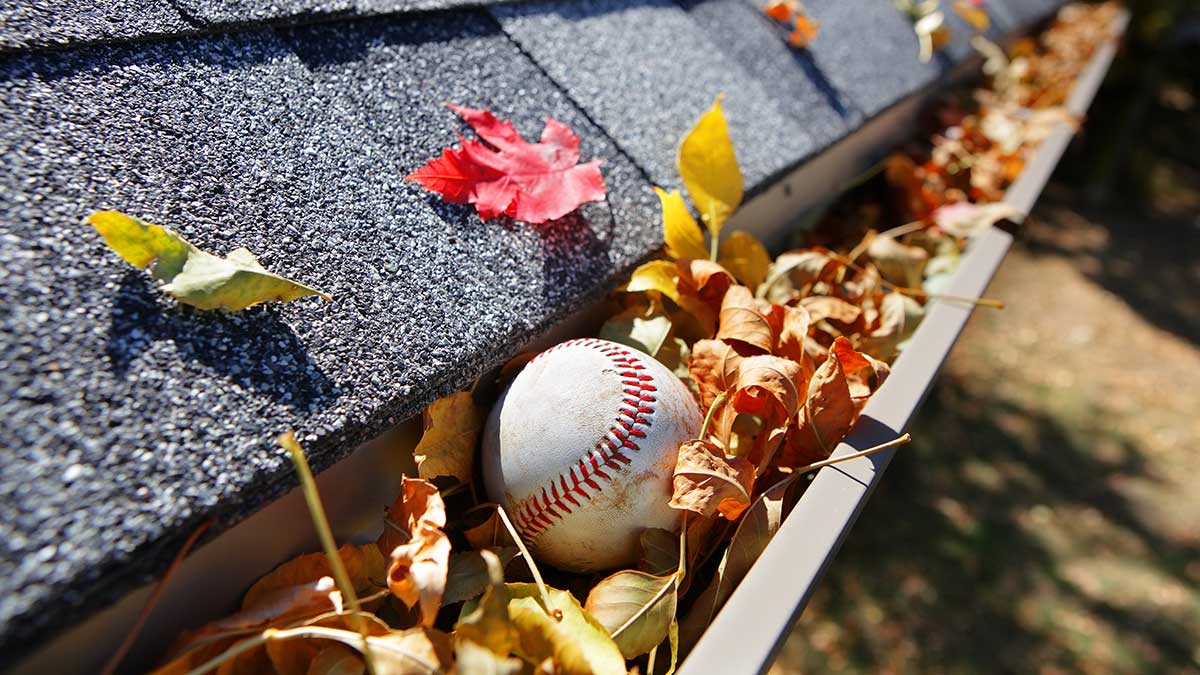Many people overlook their gutters when it comes to home upkeep. However, gutter maintenance protects their dwelling and the surrounding property from considerable damage. How you clean gutters clean can significantly affect the environment.
Homeowners take on many responsibilities when they buy a house, including gutter maintenance. Clean gutters protect your home from water damage, roof rotting and infestations. For example, birds and wasps may create nests using debris buildup, while mosquitos may lay their eggs in standing water. Maintaining your gutters also prevents backed-up water from washing away mulch, plants and soil, destroying your landscaping.
Know Your Gutter Maintenance Choices
Experts recommend homeowners clean their gutters twice annually, preferably in the spring and fall. This entails removing leaves, branches and other obstructions. However, if your yard has overhanging trees, you may need to clean them more often. Of course, there’s a correct way to keep them clean while safeguarding the environment. Here are seven ways you can sustainably and effectively maintain your gutters.
Install Gutter Guards
Installing gutter guards keeps pine needles, leaves, branches and other natural debris out of your roofline’s gutter, allowing water to flow more easily. As a result, there is also less chance of ice dam formation and pest infestations.
You can choose from several gutter guards, including steel mesh, screens, bristled brushes and hoods. Deciding on the correct type of guard should depend on your climate, gutter size and the most common debris. For instance, you’ll want a stronger guard if you live somewhere with heavy rain and snow, while mesh is more suitable for smaller particles.
Trim Tree Branches
Tall, lush trees improve curb appeal and are ideal for providing habitats to local species. However, overhanging ones can be a real hassle for gutter maintenance. When trees drop branches and leaves in the gutter, it can cause significant water blockages, resulting in costly home damage.
By trimming back trees, you can avoid the accumulation of natural debris and prevent roof deterioration during severe weather. It is best to prune trees between November and March when they are dormant.
Remove Debris Mannually
Although there are different ways to remove debris from gutters, the most environmentally friendly way is to do it manually. This reduces water consumption from power washing and the need for potentially hazardous chemicals.
Always wear gloves to avoid cutting your hands or getting infected by sharp or pointed leaf litter. A plastic scoop designed for gutters can make removing buildup easier.
Of course, you should only clean your gutters manually if you are capable and steady enough to stand on a ladder. Otherwise, have someone do it for you.
Maintain the Roof
Addressing roof problems is crucial for maintaining gutters, especially since shingle granules and other debris can accumulate and cause clogging. If your roof is no more than five years old, you can usually get away with checking for problems yourself. Stand back from your house and look for loose or missing shingles.
If your roof is older, experts recommend having your roofs inspected twice annually by a professional and after severe weather, such as a snowstorm, tropical cyclone or tornado. Staying ahead of potential problems keeps your gutters working effectively and prolongs your roof’s life span.
Use Sustainable Cleaners
Synthetic cleaners will seep into your backyard and possibly cause ecological harm to local wildlife and the natural environment. If you must use cleaners on your gutter, ensure they are plant-based or non-toxic.
Sustainable cleaners should not contain phosphates and chlorine, which can pollute waterways through stormwater runoff. Fortunately, these non-toxic cleaners are as effective at removing gutter debris and dirt as conventional cleaners.
Compost Debris
Use whatever leaf litter you collect from your gutter to make compost. This helps reduce waste and provide additional nutrients to the soil. You can then use the matter in your garden beds for healthier plants and flowers.
There are several reasons to use compost in your garden. It provides better moisture control and produces nitrogen, phosphorus and sulfur as leaves break down — crucial for optimal plant growth. It also combats pests and plant diseases by creating a habitat for essential soil organisms.
Harvest Rainwater
According to the U.S. Environmental Protection Agency, the average household consumes over 300 gallons of water daily. Nearly 30% is used outdoors, although the number is likely higher in drier, hotter regions. A rainwater collection barrel can reduce your outdoor watering impact.
Maintaining clear gutters allows water to flow more freely into a rainwater collection bin. You can then use the harvested water to irrigate your lawn and garden, wash your property’s walkways and driveways, or do household chores, reducing your home’s water footprint.
Home Ownership Is A Responsibility
Gutter maintenance should always be prioritized to protect your home and property. However, adopting sustainable practices will elevate your efforts to reduce your environmental footprint. Prevent gutter issues before they occur to avoid costly damage.
About the Author
Rose Morrison is the managing editor of Renovated Magazine. She has over six years of experience writing about sustainability, circular economy, and better building. When not contributing to various reputable publications and advocating for environmental awareness, Rose loves being outdoors and spending time with her pets.
Source link
Earth911 earth911.com

